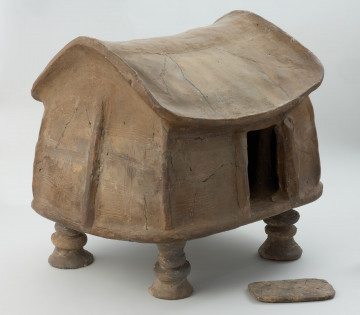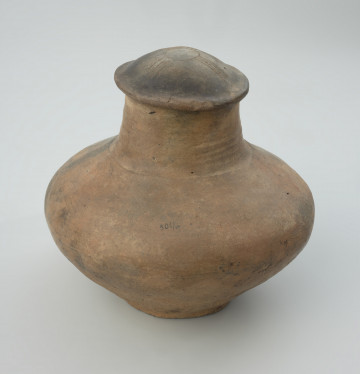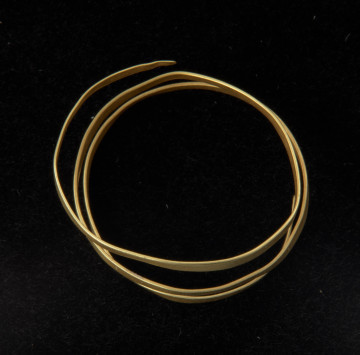
A cottage urn
around 750 p.n.e. — 550 p.n.e.
National Museum in Szczecin
Part of the collection: Bronze Age
The uniqueness of this cottage-shaped urn lies in the simplicity and harmonious combination of all elements. The cantilevered, quadrangular body is covered by an appropriately shaped biconical roof with small eaves and is given lightness by decorative bands of engraved lines. The structure is supported on four pillars resembling the feet of an elephant. In one of the walls, there is a characteristic square opening covered with a movable clay plate imitating a doorway. The ashtray was the equipment of a cist grave made of stone slabs, in which a bronze pin and a clay vessel serving as the so-called appetizer were also accompanying vessel. The group dates from 1926, from the cemetery where the first house urn was found several decades earlier. Ashtrays of such shape appeared in the northern part of Europe under the influence of Etruscan tribes from central Italy. The idea was brought to Pomerania by Central Germany through the so-called House Urn culture. This type of ashtray is also known from Bornholm, the Jutland Peninsula, northern Germany, and southern Sweden. House urns from Poland, whose range is limited to Eastern Pomerania, are related to the Pomeranian culture. They occurred there only during the Hallstatt C period, i.e., for about 150 years. Recent research on the phenomenon of house urns has shown that Pomeranian objects are most probably a representation of the then local construction.
Dorota Kozłowska
Author / creator
Dimensions
the entire object: height: 29 cm, width: 35 cm
Object type
house-shaped urn, funerary vessel
Technique
firing, carving, manual modelling
Material
ceramic
Origin / acquisition method
legal transfer
Creation time / dating
Creation / finding place
Owner
National Museum in Szczecin
Identification number
Location / status

around 750 p.n.e. — 550 p.n.e.
National Museum in Szczecin

around 600 p.n.e. — 400 p.n.e.
National Museum in Szczecin

around 1700 p.n.e. — 1500 p.n.e.
National Museum in Szczecin
DISCOVER this TOPIC
Museum of King Jan III's Palace at Wilanów
DISCOVER this PATH
Educational path